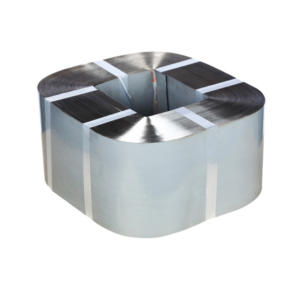
Introduction to the crucial role of transformer core design
Transformers are vital components in electrical systems, enabling the efficient transmission and distribution of electricity across different voltage levels. They convert voltage levels to suit various applications, from power generation and distribution to industrial and consumer electronics. At the core of every transformer lies its core, responsible for transforming electrical energy. The core acts as a pathway for magnetic flux, facilitating energy transfer between primary and secondary windings. Thus, the design of the transformer core significantly impacts its overall performance, efficiency, and reliability, influencing factors like energy losses, voltage regulation, and thermal management. Understanding the crucial role of transformer core design is essential for engineers and researchers aiming to enhance electrical system effectiveness and sustainability. By delving into core design intricacies, engineers can optimize transformer performance, reduce energy wastage, and advance modern electrical infrastructure.
Transformer cores play a critical role in facilitating the transformation of electrical energy by providing a path for magnetic flux to link primary and secondary windings.
The design of transformer cores must optimize magnetic properties such as permeability and saturation to ensure efficient energy transfer and minimize losses in the transformer system.
Factors Influencing Transformer Core Design
Core material selection plays a crucial role in determining the magnetic properties and efficiency of the transformer. Factors such as permeability, hysteresis, and core losses need to be considered when choosing the appropriate material.
The shape and size of the core significantly impact its performance. Optimal core geometry minimizes magnetic flux leakage and ensures efficient energy transfer between windings. Additionally, factors like winding configurations and insulation requirements influence core design decisions.
Optimization Techniques in Transformer Core Design
Various strategies exist for minimizing core losses, including the selection of low-loss core materials, reducing eddy current losses through lamination, and optimizing core geometry to minimize flux leakage.
Techniques for improving efficiency and reliability include thermal management strategies to dissipate heat generated during operation, implementing advanced insulation materials to enhance dielectric strength, and employing innovative cooling methods for effective heat dissipation.
Advanced Innovations in Transformer Core Design
Explore emerging materials such as amorphous alloys and nanocrystalline materials, as well as cutting-edge manufacturing technologies like additive manufacturing and precision machining.
Discuss customization options such as modular core designs and tailor-made solutions to meet the unique requirements of different applications and industries.
Case Studies and Practical Applications
Highlight case studies showcasing effective transformer core designs, demonstrating their impact on performance and efficiency.
Explore real-world applications across various industries, illustrating how optimized core designs contribute to improved functionality and outcomes.